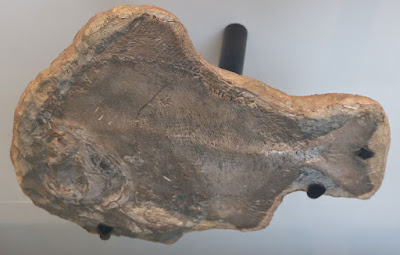Back from volunteering at the Falls of the Ohio State Park (Clarksville, Indiana USA) where I spent about 4 hours identifying and digging up Silurian fossils for visitors to the park. I spent my time at the four socially distanced Waldron Shale piles containing Silurian period fossils. It was a real treat working this year as I was paired with local historian/teacher and park volunteer Kenny Karem. I enjoyed hearing his stories about his long time friend and Falls park advocate Ruth Browne (1905-1999).
Even though it rained yesterday, the piles did not yield too many fossils on the surface. After splitting some of the shale rocks, I found several Eucalyptocrinites crinoid cups and some stem pieces. These fossils were given to some teachers from Ohio.
This next image shows Atrypa and Fardenia brachiopod fossil imprints (negative). I gave the positive side away to someone not having much luck finding any fossils. Did not take a picture of it before hand. A number white calcite Atrypa brachiopods were found while I was there.
Last image is of a mineral found in the Waldron Shale: pyrite or "fool's gold". I challenged a number of children collecting at the piles to try and find some pyrite crystals to take home with them.
All in all a nice day. It was hot (in the 90s F and humid). Working in the shale piles was muddy. I did not get to check out how the mineral piles or Devonian period fossil piles were going. The Devonian one was very mucky and wet.
Read my write up of this event in 2020 at THIS LINK.





















